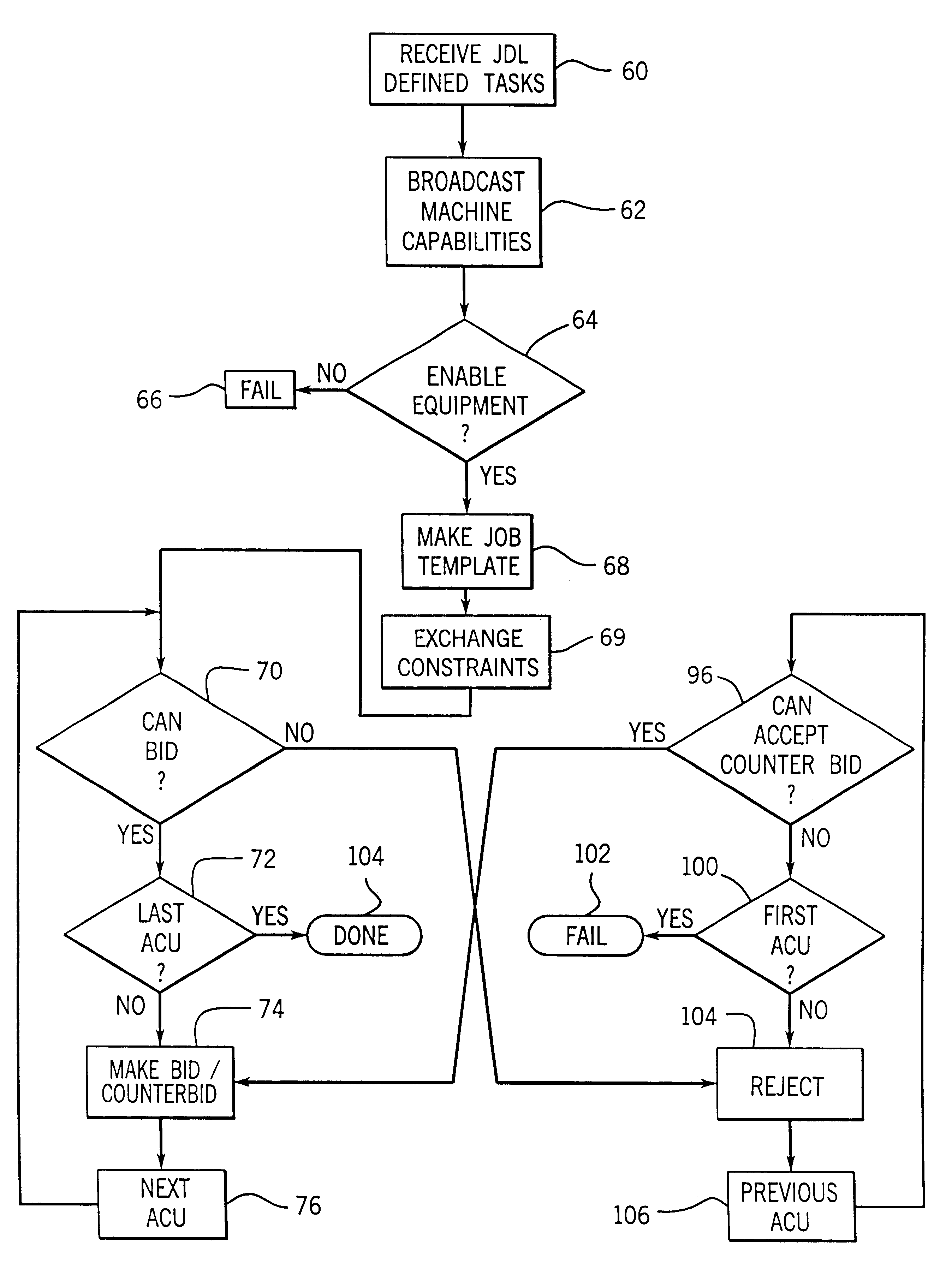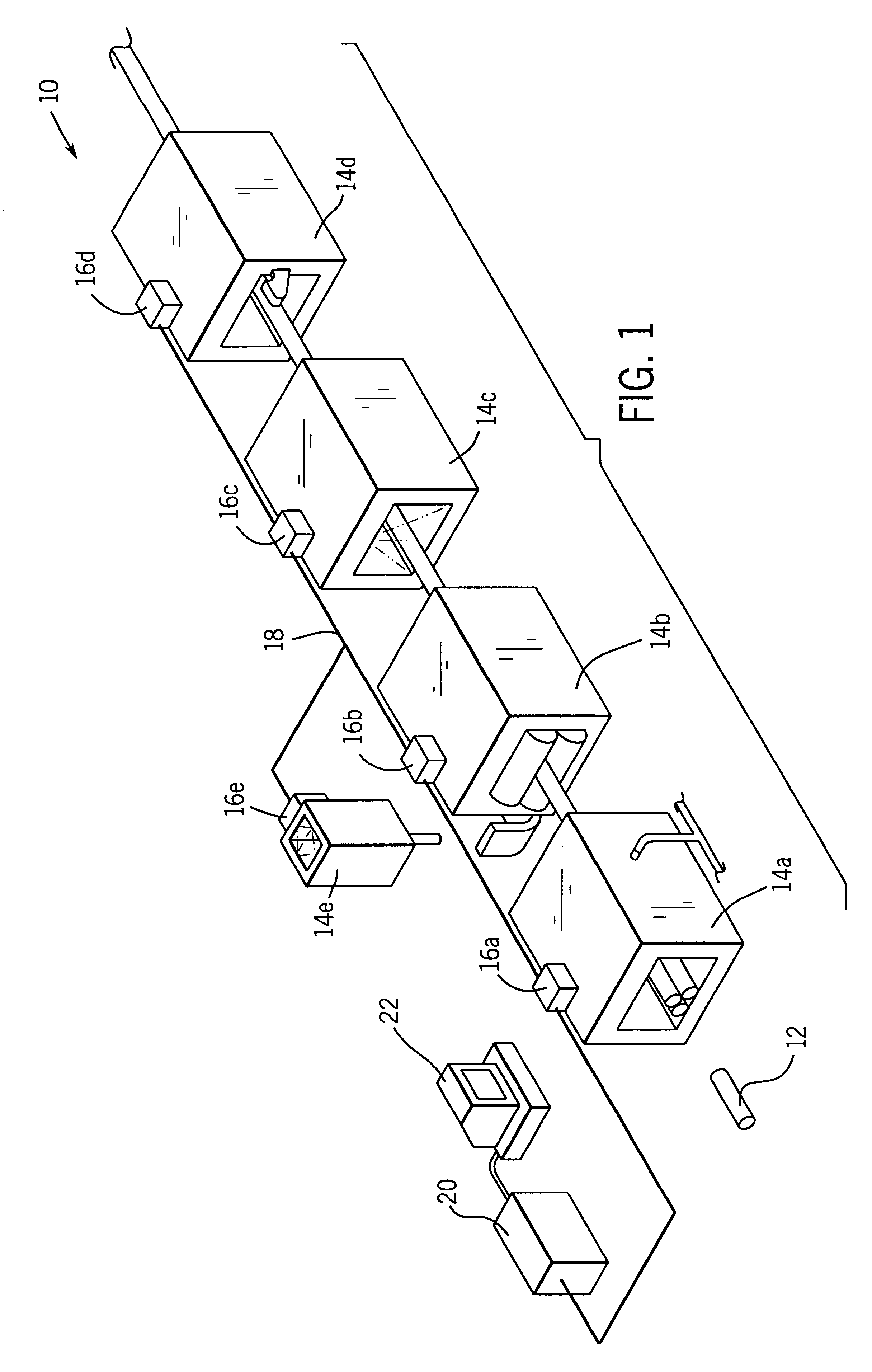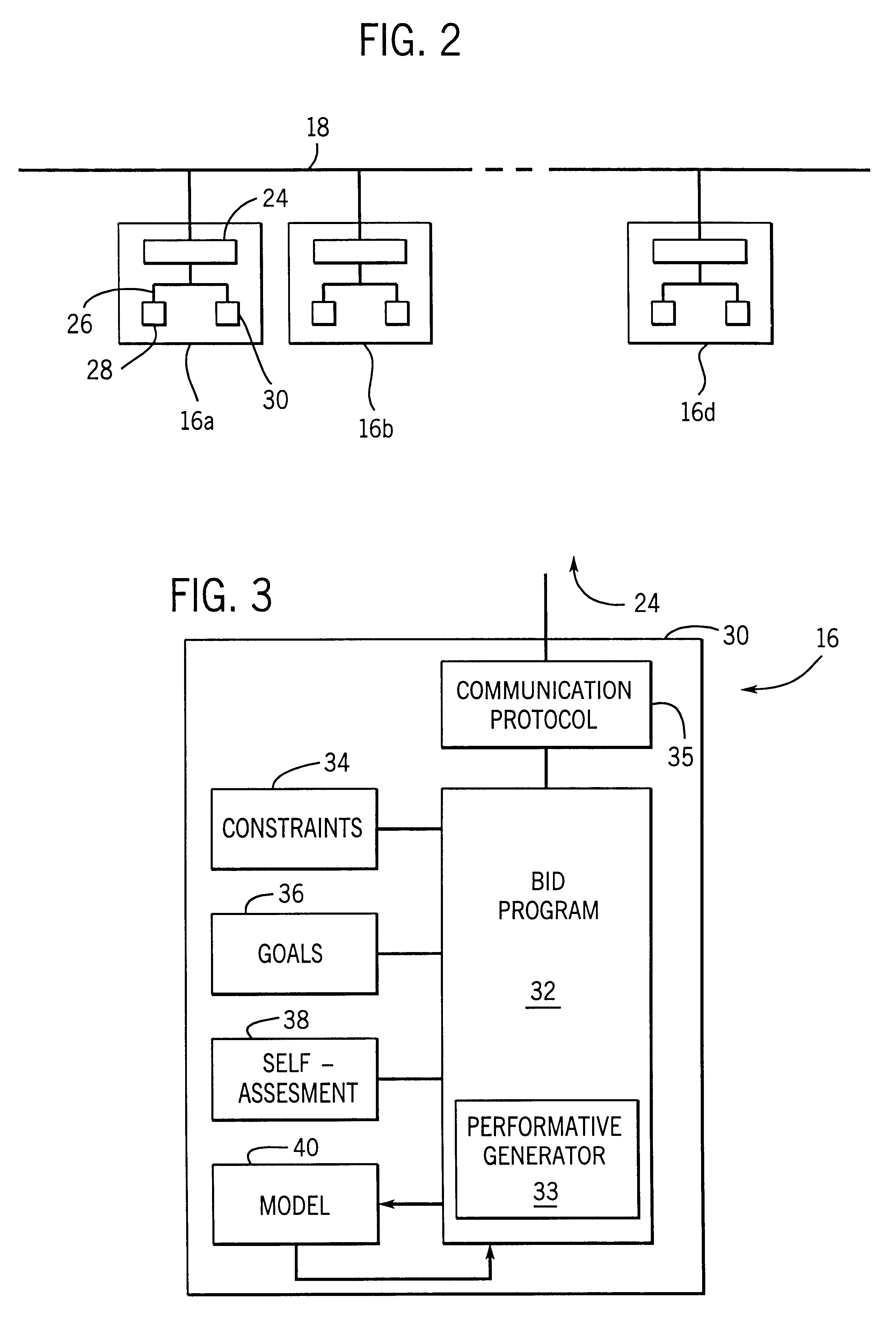Self-organizing industrial control system using iterative reverse modeling to evaluate bids
- Summary
- Abstract
- Description
- Claims
- Application Information
AI Technical Summary
Benefits of technology
Problems solved by technology
Method used
Image
Examples
Embodiment Construction
Components of the Control System
Referring now to FIG. 1, an industrial process 10 may provide for the processing of metal billets 12 through a series of machines 14. Each machine 14 may have an associated autonomous control unit 16 being either discrete devices as shown in FIG. 1 or portions of a centralized machine. The autonomous control units 16 may be separate computers interconnected by a common communication link 18 and also connected by the communication link 18 to a controller 20 and a human / machine interface such as a computer terminal 22 of conventional design. Alternatively, the autonomous control units 16 may be partitions of controller 20 communicating with the machines 14 via sensors and actuators on the machines 14.
In an example, process 10 suitable for control by the present invention, machines 14 may include a reheat furnace 14a for heating precast billets 12 to a predetermined temperature, a rolling mill 14b for rolling the billets 12 to a predetermined diameter, a...
PUM
 Login to View More
Login to View More Abstract
Description
Claims
Application Information
 Login to View More
Login to View More - R&D
- Intellectual Property
- Life Sciences
- Materials
- Tech Scout
- Unparalleled Data Quality
- Higher Quality Content
- 60% Fewer Hallucinations
Browse by: Latest US Patents, China's latest patents, Technical Efficacy Thesaurus, Application Domain, Technology Topic, Popular Technical Reports.
© 2025 PatSnap. All rights reserved.Legal|Privacy policy|Modern Slavery Act Transparency Statement|Sitemap|About US| Contact US: help@patsnap.com



